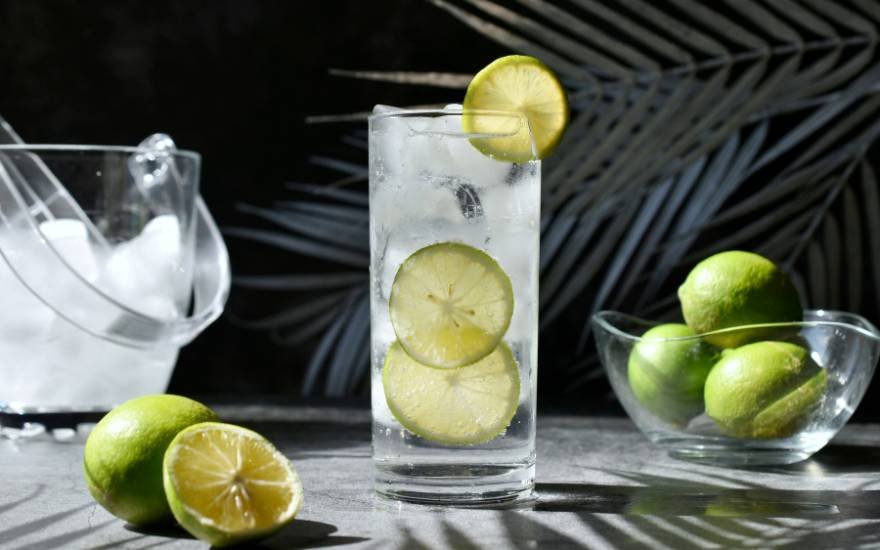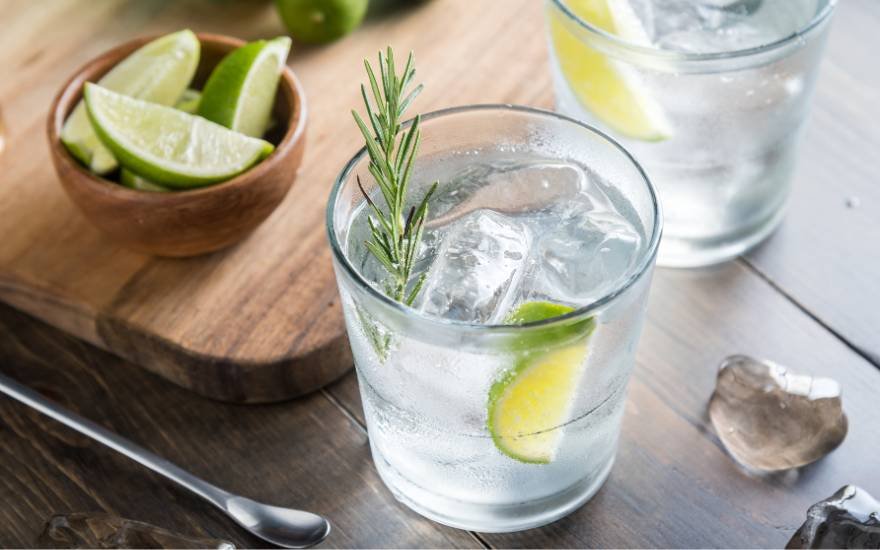Tonic, Club Soda, Soda, Seltzer, and Sparkling Water – there are a few different terms both in the UK and across the pond to describe what is essentially fizzy water. But are they all just that – fizzy water? Well, yes and no.
Most of the time, sparkling water, soda, seltzer, and club soda are now essentially the same thing. Sparkling water is more of a British term, whereas the other two are more American. Club Soda is more of a brand-focused term, seltzer is from Germany and soda is the generic name for what we could call sparkling water in the UK – but as you’ll probably know, it’s mostly used interchangeably these days.
Of course, there are some differences. Different water, production and brands vary in terms of minerality and bubbles. Not only that, but club soda tends to have more minerality added rather than naturally occurring. Seltzer, however, is less minerally so more like plain water that has been carbonated. But give or take, they’re generally the same; carbonated water with varying levels of minerals in them.
Tonic, on the other hand, is notably different from soda. So, if you’ve ever been curious as to the difference or in wondering what difference they will make to your drink, then keep reading!
The Difference Between Tonic Water and Soda
Fundamentally, tonic water has a more bitter flavour than soda or sparkling water. Whilst soda has carbonation and minerals, tonic water usually has quinine added, as well as sugar/sweetener and sometimes other botanicals and flavours.
Tonic has a medicinal history. When colonising, British people looked for measures to protect themselves against malaria in much of India and Africa. Using knowledge discovered by indigenous South American communities, they started to include cinchona tree bark for its alkaloid, ‘quinine’ which helps to prevent malaria spreading.
The difficult-to-consume bitter taste began to be tempered with sugars and flavours, and then carbonated by businessmen like Erasmus Bond and companies like Schweppes. This, paired with gin, became an iconic British serve.
There isn’t as much quinine in modern tonic water as there used to be to make it more palatable and less medicinal, balanced out by ingredients like corn syrup and cane sugar.
Soda has none of this – it’s far more neutral tasting. That’s not to say that tonic water is intensely flavoured, but it certainly brings more to the flavour table than soda does.
What Are The Different Flavours of Tonic Water?
Once upon a time it was only original, or Indian tonic water available to drinkers. Of course, now, like any drinks product, customisations and spin offs are everywhere. The truth is brands like Franklin & Sons have been innovating in this space so the selection of flavours is now incredible. We went through a couple here, such as Sicilian Lemon and Rosemary & Black Olive.
The original Indian tonic (mostly with just quinine) is still the most popular, mostly as the T of G&T, but there are some other increasingly popular flavoured tonics. Lemon, Mediterranean and Elderflower for example.
Even within Indian tonic water, the subtleties from brand-to-brand change. You can find light options (with less sugar), citrus-led options, more/less bitter options – pretty much anything.
What Are The Different Flavours of Soda Water?
Original, plain soda, as discussed, is carbonated water with varying levels of minerals like salt. But there are many flavoured sodas out there too. Franklin & Sons for example, produce Guava & Lime, Pineapple & Almond, Mandarin & Ginger, and Pink Grapefruit. If you can imagine it, it probably exists.
Where you have to be slightly careful is that ‘soda’ is sometimes used to refer to fizzy pop style drinks in general. It should be quite clear from the packaging, but just make sure you don’t pick up a super sweet fizzy drink instead of a soda water style drink… unless you want it of course.
Should You Drink Tonic or Soda Water?
Surprise, surprise, this all comes down to personal preference. Both drinks have similar benefits which is that they let the spirit alongside them shine. If you’re fed up with super sweet fizzy drinks or intense juices dominating your serves, then both soda and tonic can dilute the mix and let the existing ingredients shine.
Take gin for example. If your gin is very complex and flavourful, then a simple soda, or flavoured soda to complement, might be perfect. However, if it’s a sweet gin, maybe some bitter tonic will balance things out. A Mediterranean tonic with herby citrus tang is brilliant with gins of the same nature, whereas an Elderflower tonic can really bring a floral gin to life.
There’s no one rule fits all policy when it comes to soda or tonic – it depends on the flavours you want, the flavours of your tonic/soda, and the drink you’re combining it with.
If you’re looking for more ideas to mix with gin, then find our suggestions here. Alternatively, we have some tonic recommendations here, from our favourite supermarket own-brand tonic to premium fizz. Experiment and mix tonics and sodas in all their flavours with your favourite drinks – they’re subtle, but they make a big difference.






